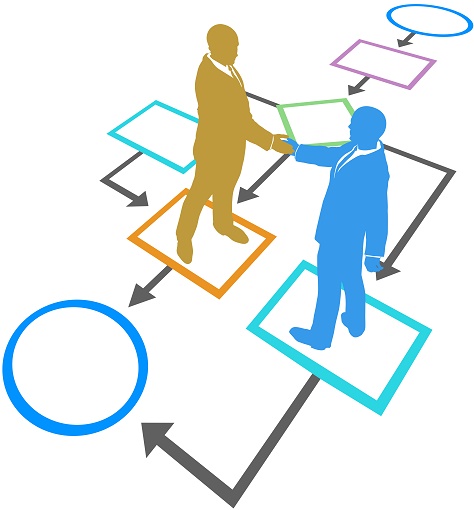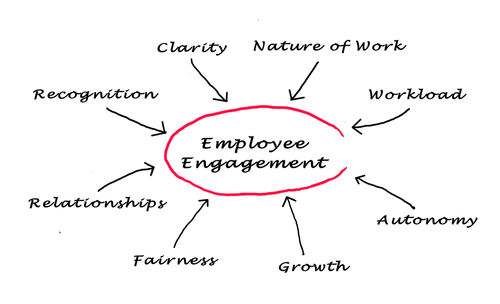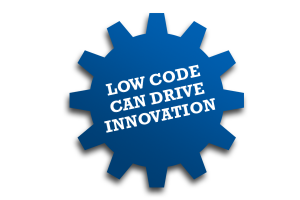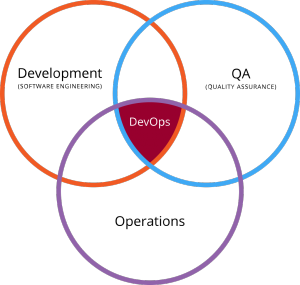Category: Enterprise Software
IT is all about talent, how skillful and creative developers apply their talent to technology, to develop cutting edge solutions to solve a problem or unlock some latent possibilities. The role of Human Resource, responsible for acquiring and nurturing is very much underestimated and often overlooked, in such a scheme of things.
HR is today a key enabler of the organization’s strategic goals, having grown from its earlier avatar of functional “Personnel Management” to assume a complex role that cuts across all aspects of the business.
The Need for an HRIS
Realizing HR’s strategic mission necessitates the HR team to align its approach with the broader business model. Often, HR is trapped in transactional activities that add little value to the overall enterprise. For HR to add value, all its activities, including transactional activities, have to be integrated into organizational goals. The need of the hour is strong systems that integrate processes, eliminates silos, and reduces paperwork. A key enabler in this front is HRIS (Human Resource Information System), which is just as important as a CRM or ERP for the enterprise. A good HRIS not only enables automation and standardization of key processes but also forges deep integration with other systems running in the enterprise. Such a systems-driven approach gives key stakeholders access to the complete information in real time, improving the quality of their decisions.
HR and Big Data
A solid HRIS goes beyond enabling linkage top HR functions. In today’s tech-heavy world, data is a key source of competitive advantage, and HR holds the most crucial data related to the internal trappings of the enterprise – that of its people. Unlocking the big data HR holds by incorporating a robust analytic engine to the HRIS can yield rich insights and transform the workings of the enterprise.
An effective analytics based HRIS that pull, aggregates and analyze data from various sources, brings accuracy and clarity to all workforce-related processes.
Compensation
Today’s competitive pressures force many businesses to tie staffing and compensation decisions to specific business problems. To further this end, many enterprises now use workforce analytics systems, integrating HR data with information from sales, finance and other business operations. The reports and forecasts generated by workforce analytic systems become the basis to determine compensation and benefits packages.
Forging a sound compensation-related analytics system for HR requires effective coordination between HR and IT, not just to get the technical backbone up and running, but to identify the skill-set and relative worth of every skill.
Workforce Management
Many HR technology vendors now integrate analytics to not just payroll, but also to hiring and people management platforms. A 2016 Deloitte survey reveals 48% of businesses using staff analytics for workforce planning, with 39% correlating data about their employees to business performance
In today’s fast-paced world, where roles and opportunities remain fluid, and nothing is left in stone, analytics help HR predict with a great degree of accuracy how to effectively adjust and allocate the workforce to keep pace with changing business needs.
Training and Development
Training is an integral part of inculcating employees with the latest skills, so essential in today’s fast-changing business and technology environment. Smart HR, attuned to today’s competitive pressures, make an effective team with the tech team, to identify people who require training, and devise the most appropriate “push” or “pull” training methodologies. In an ideal enterprise, HR is the coordinator and the patron of the training initiatives, and also links training effectiveness to performance initiatives.
Effective analytics helps HR gain insights into the execution of critical tasks, and identify the difference between desired performance and actual performance, drilled down to individual employees. This becomes the basis for designing a training and development plan for each employee.
HR as a Catalyst for Employee Engagement and Productivity
The HR strategy has an important, yet often overlooked the impact on employee engagement and productivity. In times of stability, the policies and systems in place inspire leadership and motivate the workforce to put in their best short. In times of change, how HR takes the lead in driving change has a big bearing on how employees buy the change, and remain motivated in the wake of new paradigms and changed realities. In today’s tech-centric enterprises, it requires effective coordination between HR and IT to develop robust systems that allow employees to remain productive, and bring stability during the times of change.
Harvard Business School defines Competitive advantage as “firm is something unique that competitors cannot easily copy.” For HR to create competitive advantage, it needs to develop systems and processes that maximize the abilities of the workforce and tap into organizational capabilities to the hilt. It requires well developed and robust solutions, in the form of mobile apps and more, to ensure the technical backbone of HR is up to the task, to realize competitive advantage. With our considerable experience in developing solutions across-the-board for hundreds of enterprises, we are in the best position to fulfill the void. Our team of highly resourceful and talented developers would understand your specific requirements, and develop cutting-edge solutions that propel your enterprise to a whole new level.
Stay up to date on what's new

Featured Blogs
Stay up to date on
what's new



Talk To Our Experts
Success in today’s highly competitive environment is all about being fast and competitive, and this translates to shortening the learning curve when adopting new technologies. While training is touted as the obvious solution, most enterprises are caught in the trap of the obvious, failing to estimate whether training is indeed worth its while. The reality is much of the on-going employee training is worthless. McKinsey & Co. estimates training enhances the performance of only 25% of the employees.
Employers train the workforce, in hope, they gain competencies to handle a new technology better. However, today’s world is marked by fast-paced changes, and in a state of continuous flux. Change is the only constant, and the odds are by the time the trained employees gain mastery over the new technology, it may already be obsolete, to be replaced by something new. Just to put things in perspective, training certificates denoting competencies in Dbase, Foxpro, Sybase and many other technologies that were a rage not too long ago are now not even worth the paper it is printed on. Each new wave of tech advancements, such as the cloud, IoT, Artificial Intelligence, Immersive Technology, and others, demolish existing paradigms.
In the fast-changing environment, success depends not on training, but on adaptability. Only employees who have the skill-set to learn something new, and learn it fast without being spoon-fed, or wait for a formal training process, will succeed. Equally important is the uncanny ability to unlearn what is no longer required and may become counterproductive.
Another case against on-going employee training is its disruptive nature. Training is time away from what the employee is supposed to be doing, and cuts into productivity, with an uncertain promise of better productivity in the days ahead. There are too many variables in today’s fast-paced world to hold with any optimism the investment in training will recoup lost productivity in the future.
However, doing away with training and leaving employees on their own is akin to throwing the baby out with the bathwater. The solution rather is a shift in approach. The fact remains employees may remain technologically challenged with the new technology and may be hamstrung in doing their jobs optimally without training. The solution lies in adopting a new approach to training, along with a combination of intelligent work design, greater transparency, and developing “democratic apps” and other solutions.
Training Needs a Reality Check
Training requires a reality check. Training fails to realize its objectives mainly due to lack of strategic focus. Many enterprises go agog with the latest technology trends, rather than taking the time to understand the skills most critical to the business’s stage of development.
The most effective training offers practical skills critical to the present stage of organizational requirements. Training for anything not required in the next six months is pretty much a wasted effort. With high employee turnover, coupled with a short technology shelf-life, the only metric that really matters for the enterprise is the short-term or immediate return on the training dollar.
There is a need for effective follow-up as well. The American Society for Training and Development (ASTD) estimates U.S. firms invested about $156 billion on employee learning (2011), but as high as 90% of the new skills are lost within a year, owing to lack of follow-up to lock in the gains.
Road-test the training. Enterprises who do not give employees the opportunities to apply the newly acquired skills, by not facilitating them with the right tools and technologies are frittering away their investment in training.
The actual conduct of the training also makes a big difference. There is also a case of avoiding boring marathon sessions, which are disruptive in nature and offer training in short bites or capsules, preferably on the job. Hands-on training, during the course of work, offers promise for being most relevant, and the least disruptive. Upskill offers a competency-based training software for enterprises that combines advanced technology, quality content and expertise to discover potential and maximize the productivity of your workforce.
Intelligent Work Design
Success depends on making optimal use of every dollar. A part of the investment on training could be diverted to intelligent work design, to deliver much more efficient and long-lasting returns.
Intelligent work design makes work processes simple, and removes complexities from the equation, reducing or even doing away with the need for training. Automation of routine processes, and the use of Artificial Intelligence to relegate to the back-end many works that now require technical expertise would especially make the need for training redundant.
The Push towards a Learning Organization
Peter Senge, the noted management expert expounded the concept of a learning organization way back in the 1990s. Senge defines the learning organization as one where the enterprise nurtured and encouraged expansive patterns of thinking, the workforce continually expanded their capacity to create the desired results, and work together for the realization of mutual goals. In other words, employees are self-motivated and learn on their own
Greater transparency, mainly brought about by demolishing data silos and barriers of knowledge, makes many hitherto challenging tasks explicit and furthers the cause of a learning organization
Democratic Apps
Democratic apps leverage the power of simplicity, making the front end seamless and obvious without the need for any training for even the most technically challenged user.
Side by side with democratic apps, there is also a case for promoting the BYOD culture. When employees bring their own familiar device, they can handle most of the workflows without a learning curve.
It requires professional expertise to redesign systems, and roll out highly intuitive apps that take the complexity out of the equation. With our extensive experience cutting across sectors, and our highly skilled talent pool, we are ideally poised to partner with you in the quest to develop intelligent mobile solutions that reduce your training budget.
Stay up to date on what's new

Featured Blogs
Stay up to date on
what's new



Talk To Our Experts
B2B ecosystems constitute the backbone for several critical functions in the enterprise including supply chain optimization, sales, marketing, product development, knowledge management, and even innovation. Such B2B ecosystems thrive on the exchange of information and uninterrupted collaboration.
The growth in popularity of mobile devices is all-pervasive. It is not just retail customers who prefer mobile devices for shopping, but also internal enterprise users, who prefer to get things done through the convenience of their smartphones. The proliferation of the BYOD culture, where employees access the corporate network through apps downloaded on their mobile devices and get the job done even when on the move, has further fueled the growth of mobile services in the enterprise.
In such a state of affairs, the business-to-business (B2B) segment is also seeing a surge in mobile services, side-by-side with the much-publicized business-to-customer (B2C) segment. With mobility now becoming central in the scheme of things for B2B ecosystems, here are key trends in the future of B2B enterprise mobile services.
Mobility Solution Management to Mature from EMM to Seamless Integrated Experience
Enterprises are moving to enterprise mobility management (EMM) solutions to gain control over their ever expanding mobility ecosystem. EMM facilitates laying down policies and structures for mobility management, offering a unified, integrated place for the management of devices, apps, and content, and also to enforce security.
In today’s fast paced tech world, organisations have started moving beyond such traditional EMM functionality as well. Enterprise apps, dealing with distinct processes such as procurement, sales, and more, are still independent to one another, existing in silos, without any functional integration between them, and not factoring in conditions relevant to the user. This is changing, with mobile devices now slowly but surely becoming a central node in a connected ecosystem. In such a changed scenario, B2B app users transition from a broken to integrated frictionless experience, with the mobile experiences evolving in terms of channel, context, and construction.
In response to the changing scenario, EMM is evolving from simple device management, to incorporate advanced features such as user credential distribution, single sign-on (SSO), access control, and more, deeply integrating itself into the core IT of the enterprise. Advanced EMM also offers software development kits (SDKs), enabling app developers to offer content control, encryption, data loss prevention policies, and other security-enhancing features.
Artificial Intelligence to Become Well-Entrenched
All the hype surrounding artificial intelligence and automation notwithstanding, most mobile devices still rely on direct user instructions, forcing business users to move in and out of apps to get things done. However, the spread of AI technologies means many tasks now done manually, even with the convenience of apps, will soon be automated, requiring no human intervention, or at best only validation. The proliferation of new AI inspired technology such as Google Glass and more would also decrease the dominance of apps in the scheme of things, offering users more touch points to get things done in a much easier way. The key to such next generation B2B enabling devices is present and upcoming technology innovations.
Rise of Rapid Application Development and Containers
The latest trends in mobile app development, such as the use of low-code and no-code option for rapid application development, the use of containers, and other trends will apply equally in B2B space, just as it shakes up the B2C space. Mobile app development is increasingly becoming agile as well, with greater thrust on design reuse, modular approach, and more.
In the quest for efficiency, the thrust of application development will not just be on creating new apps and solutions, but also on ensuring online workflows work seamlessly with offline mobile contexts. There will be a greater focus on innovation as well, by applying in-vogue and emerging concepts such as mechanisation, machine learning, natural language, immersive analytics, and more. There will be increased integration of voice, video, and images in B2B apps as well. The application of MVP (model-view-presenter) architecture will improve user experience significantly, and drive the application of new technology to spur innovation.
B2B Enterprise Seek Increasing Value from Mobility
In an interconnected ecosystem, the real value of mobility goes beyond the value of a particular function or app. The true value realizes when the app completes a piece of the jig-saw, or enabling well-timed business moments that enables the continuation of a relationship, and or opens up additional value. In such a scenario, the focus shifts from data models to service models, where customer or client experience is the overriding concern as opposed to the data or asset the enterprise holds. What the enterprise has is no longer relevant. Rather, what they do with the available resources makes all the difference.
Enterprises are now forging a tighter integration, and even merging mobility with IT team, to ensure the agility brought about by mobility rubs off on the rest of the enterprise.
In the quest for operational excellence, improved engagement with customers and clients, and also a competitive advantage in an increasingly tough business environment, B2B enterprise mobile services are embracing big changes. Those who miss out stand to lose out big time. For instance, mobility-lagging organizations face the risk of key employees becoming frustrated with the lack of productivity enhancing apps, and resigning.
In such a scenario, it pays to rope in a strategic partner who is competent in the mobility space and has solid experience helping enterprises roll out highly successful mobility campaigns and implementations. We are the right partners for you, as evident from our list of satisfied customers, cutting across sectors.
Stay up to date on what's new

Featured Blogs
Stay up to date on
what's new



Talk To Our Experts
As the world increasingly becomes software-centric, more and more enterprises are rolling out enterprise software of all hues. Empirical evidence suggests enterprises using enterprise software performs better financially, compared to enterprises which do not use such software.
However, after the gung-ho about the benefits on offer come the reality-check of costs and return on investment. In today’s highly competitive world, the top management and investors demand accountability for every dollar. The productivity improvements, new possibilities and other benefits notwithstanding, top management invariably insist aligning enterprise software with short-term business interests, and seek to justify it through metrics such as Return on Investment (ROI) and Total Cost of Ownership (TCO). In such a context, budgeting for enterprise software becomes critical.
As a rule of thumb, a standard non-subscription enterprise software ranges anywhere between $10K and $500K, depending on the functionality and feature list. However, drawing up a specific budget, and more importantly, adhering to it can be quite a challenge.Here are the key factors to consider when budgeting for enterprise software.
Software Development Costs
Since enterprise software is mostly custom built for specific tasks, it varies in price drastically. The cost of any particular enterprise software is often a function of the feature and function list. Another key consideration is the technology used. For instance, a proprietary stack would cost more than an open-source stack. Enterprises need to make a trade-off upfront between the range and depth of the software, and the investment they are prepared to make.
For instance, bare-bones email software, with no spam filters would cost considerably less than full-blown software that co-opts spam filters and other advanced options. However, opting for the full-blown version would also entail considerable up-front investment, which may make the whole exercise financially unviable or less attractive for the enterprise. The price differential may also translate into getting much more for less. There is no right or wrong solution, and the enterprise needs to make a trade-off at the planning stage, based on the need, depending on what suits them best.
Enterprises nevertheless would do well to seek the best value-for-money proposition, rather than going for the cheapest option. A case in point is investing more for futuristic and expandable technology stacks, rather than risk low-cost enterprise software that may become obsolete in a year’s time. Often the enterprise takes a risk by subsidizing the initial investment, hoping for ROI in the long run, as the software matures and becomes part of the day-to-day infrastructure.
Many enterprises now adopt Software as a Service (SaaS) solutions, which not only offers anytime, anywhere availability but is also cost-effective compared to on-premises installation.
Licensing Costs
Unless the enterprise is developing the software solution in-house, they would need to purchase the license from the developer.
Annual licenses, common with subscription or software as a service (SaaS) offerings, is a popular and convenient option, where enterprises purchase a per-user license from vendors. Such licenses are generally all-inclusive, including technical support, software maintenance, and hosting.
Consumption licenses offer a “pay-as-you-go” model, which is a variant of the annual license model. Here, the enterprise pays only for the actual use of the software rather than fixed monthly or annual fees.
Perpetual licenses are the opposite of annual license, where the enterprise makes an upfront, one-time payment for the license, and get to own the software for eternity. This is the most common type of license for custom made and self-hosted enterprise software. However, even such licenses may be on a tiered basis, with the amount varying for a number of users. Enterprises would also have to pay annual support and maintenance fee, usually in the range of 10% to 20% of the perpetual license fee. The updates, upgrades, and fixes are part of maintenance, but enterprises would still pay additional for changes to the software, such as changing functionality depending on business requirements.
Hosting Costs
It is not enough to develop the software. The developed software has to be hosted. Nowadays, the trend is hosting in the cloud, which is much more convenient, cost effective, and perfectly suits the needs of mobility. The enterprise generally enters into a Service Level Agreement with the provider, fixing the payment, and securing a guaranteed level of service, in return. As a rule of thumb, cloud vendors generally price about 1/3 of the upfront license cost of on-premises solutions, on an annual basis.
Implementation Costs
After developing and hosting the software, it has to be implemented, meaning it is to be installed, up and running at every place the software is supposed to function. The implementation ratio is the ratio of implementation service cost to the software license, or in other words, the amount required for implementation, for every dollar spent on the software license. Generally, implementation will cost the same as the license, but complex implementations, spread over multiple geographies, can cost more. The cost of implementation would also depend on whether there is a need to buy new systems or terminals to run the software.
Operations Cost
The most underestimated part of the enterprise software budget is the operations costs, such as boarding costs or costs to bring users to the system, training cost, and also the opportunity cost in lost productivity as people forsake their earlier system, and get familiar with the new software. However, the opportunity cost, and for that matter, all cost pays back for itself in a short while, if the software is good enough to boost productivity and unlock new opportunities.
Enterprises not having the latest cutting edge software stand to lose out big time. At the same time, software is not the end in itself, but rather a means to an end, and it is in the organization’s interest to take up the means if the benefits of the means far exceed the investment on it. The solution to the imbroglio is partnering with us for your enterprise software development requirements. Our considerable expertise spanning across several projects, and our rich talent pool allow us to deliver highly powerful solutions in the most cost-effective manner.
Stay up to date on what's new

Featured Blogs
Stay up to date on
what's new



Talk To Our Experts
Stewart Butterfield is on a high as he’ll ever be. Slack, the cloud-based team collaboration tool, he launched in August 2013 is now the fastest growing workplace software ever. Butterfield is however, no stranger to software success, though, having co-founded several companies before Slack, most successful of which was Flickr, the popular image sharing website.
The unprecedented success of Slack raises several pointers to the future of enterprise software development.
Identify Genuine Needs
Butterfield attributes this success in developing enterprise software to his ability to identify and fulfill genuine needs. In an interview with Peter High, in Forbes, he explains the secret of successful software, using Slack as the case study.
Slack started off as a need to fill a void for internal communications in Tiny Speck, one of Butterfield’s earlier company. The partners used to communicate over IRC, which actually predated the internet. To overcome the limitations of IRC, of not being able to communicate if a user is not connected to the server in real time, Butterfield developed a system to log messages so people could catch up when they got back online. Slack germinated from this core.
New technologies, new markets, and new business models would obviously create new needs. The future of enterprise software development lies in identifying such needs and working towards fulfilling it.
Facilitate Rather than Disrupt
Gone are the days when enterprises tweaked their systems to comply with what the software demanded. In today’s highly competitive and fast-paced business world, enterprise software development needs to mirror how work takes place, and also needs to be flexible to facilitate different streams and rapid changes.
A key reason for Slack’s unprecedented success is the suite taking care of everything a normal run of the mill chat programme often overlooks. A search functionality was added to the database containing chat logs very early. Another key intuitive feature is compliance or features such as digital loss prevention, required as part of the regulatory environment. There is also a checklist feature.
Slack is also flexible and adaptable to suit the actual on-the-ground requirements of the workforce. It recognises the necessity of an employee having a different relationship with different people, and caters to having multiple groups, with flexible relationships. Slack facilitates an unlimited number of teams with an unlimited number of shared channels across those teams. People can be members of more than one team, based on communities, practices, employee resource groups, workplace location, and more.
Enterprise Software is Becoming Increasingly Collaborative
Technologies such as GitH ub and others facilitate a collaborative development process. However, today’s enterprise software development demands deeper collaboration, right from the conceptual stage. Taking active suggestions and feedback from stakeholders, especially end-users, ranks high on the list of best practices for successful enterprise software development.
ub and others facilitate a collaborative development process. However, today’s enterprise software development demands deeper collaboration, right from the conceptual stage. Taking active suggestions and feedback from stakeholders, especially end-users, ranks high on the list of best practices for successful enterprise software development.
Slack took feedback and user involvement seriously. Apart from actively reaching out to users through Twitter and other social media, Butterfield sent out user research teams to sit with customers and get insight into how Slack is working.
The Team Matters Just as Much as the Technology
Slack’s impressive growth has been paralleled by the company growing in size. The sustained success of software development depends largely on the team being able to focus on its core cultural attributes, even when there is heavy churn, and a majority of the team members are new, at any given point of time. It is equally important to have a sustainable and meaningful mission, to keep the team motivated. Butterfield’s mission is: “to make people’s working lives simpler, more pleasant, and more productive.”
Successful enterprise software development teams are highly mission-driven and set high standards of performance. They emulate professional sports teams who analyse the tape of a game for feedback on improvement. Rather than blame people or circumstances, they focus on making improvements the next time, making software development a continuous cycle, rather than a one-off project.
The Low Code Revolution is On
Enterprise software development is in the middle of a “low-code” revolution, with companies increasingly choosing solutions that require little to no manual coding. Colin Earl, the CEO and Founder of Agiloft, defines low-code software as a system configurable to meet business requirements with just a few dozen lines of code or less, apart from the API code, to integrate other systems.
Low-code systems accelerate the development process, reduces costs, and also removes uncertainties associated with enterprise software development. Low-code systems also enable quick re-deployment and rapid changes, essential in today’s fast-paced world. Such low-code platforms are generally highly scalable as well, catering to global conglomerates and a small mom-and-pop shop, at the same time.
By embracing the low code trend, companies can better their performance and improve the functionality of their enterprise software, without having to invest in infrastructure.
Butterfield estimated the market for Slack at $100 million when he first pitched the concept, and the company has already exceeded this revenue in under three years. There is nothing preventing you from developing such highly successful enterprise software. All you need to do is partner with us. Our highly experienced and talented software developers make the perfect accessories to understanding your business requirements and developing cutting edge solutions that make life easy for your workforce, customers, and other stakeholders.
Stay up to date on what's new

Featured Blogs
Stay up to date on
what's new



Talk To Our Experts
Enterprise software is in the midst of a golden run now, as more and more enterprises seek to ride the digital and mobility wave to improved efficiency and success. However, rolling out enterprise software is fraught with many challenges.
Here are the top challenges to overcome, to ensure the success of enterprise software.
- Reconciling with the Changing IT Infrastructure Landscape
IT is always in a state of continuous churn. What is trendy tomorrow may be out of favour, and even obsolete in a few weeks. What was touted as the bright new thing may soon fade off as a false start, with HTML5 being a case in point. In such a state of affairs, enterprise software developers are hard pressed to retain relevance amidst the changing IT infrastructure landscape.

The obvious solution is to future-proof the application, but there is no clear-cut answer on how.
A solution finding increasing number of takers is low-code platforms. Enterprise app developers have long discovered custom code as costly, time-consuming to develop, and difficult to maintain or make changes. In contrast, low-code application platforms reduce the quantum of hand-coding, not just accelerating the process, but also enabling fast reconfiguration of apps, quick modification of logic flows, and rapid delivery of new UI elements, as needed. Co-opting new features and integrations become a piece of cake, sans sizable investment in infrastructure.
- Relevance in an Extremely Fluid Business Environment
Side by side with the changes in the IT infrastructure landscape, the business environment also remains extremely fluid. What was a pressing need at the time of conceptualization may already have become obsolete by the time the software rolls out.
In such a scenario, trying to get everything right in one go is a sure recipe for disaster. A far better approach is to undertake small, iterative releases. Such releases make it easy to make changes, and also offer valuable learning experiences that facilitate continuous improvements.
- Challenges of Integration
While coding takes up a significant chunk of the time, it is just the easy part. Prototyping, designing the user experience and user interface, testing the application on different devices, organizing and running field trials, figuring out how to deploy the application in legacy systems, how to integrate the app with the CRM, ERP or other running systems, how to migrate the data, and how to safeguard the migrated data are all just as important, and take up significant chunk of time as well.

There is no shortcut to resolve integration challenges. The best approach is a thorough planning phase, where all possible issues are foreseen and solutions provided.
- Data Migration Challenges
Instances of the application development team, having completed the project, patting themselves on their back, oblivious to the challenges ahead, are all too common.
The real challenge starts when trying to get the software up and running, and among the key challenge is data migration.
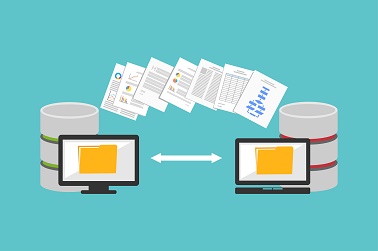
Data may reside in disparate legacy repositories and may be non-compatible with the new system. There may not be any business of validation rules in place to determine the process of migration. Many companies fail to undertake an as-is assessment, to understand the quality of the data, before starting the data migration job. Such an assessment identifies what is missing, and enable companies to assess the work required to migrate the legacy data successfully.
- The Challenge of Costs v/s Expectation Trade-Off
If wishes were horses, beggars would ride. While there are no limits on imagination and intentions, often considerations of cost bring in a reality check. The practical approach to enterprise application development is to make a trade-off between cost and functionality, to strike an optimal balance.
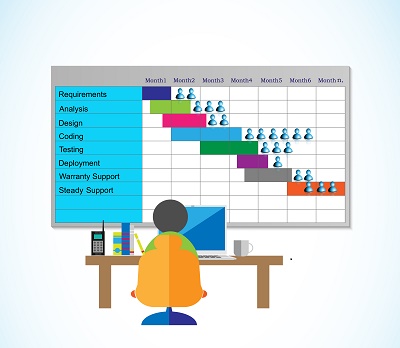
Nevertheless, often the cost required to roll out enterprise software is grossly underestimated, more so with the case of mobile software. The biggest distortion is in maintenance, with the need to push updates at regular intervals to cope with the ever-changing landscape. The maintenance cost of a software application over its lifetime will almost certainly overshadow the initial development costs.
- Change Management Challenges
The development team may have just resolved all the technical challenges, be it the product simply not installing, data migration, and everything else. But if the inevitable resistance to change is not factored in, it isn’t over yet.
A big reason for resistance is not involving stakeholders, especially end users in the development or procurement process. Managing resistance to change, and also rolling out an optimal app requires involving stakeholders, including end users, early in the development process.Take suggestions on what to include, build prototypes, and seek feedback. If end users and all stakeholders feel they have a stake in the new software and were instrumental in its development, they would consider it as their baby and support it.
Users may feign compliance if a new suit is imposed by dint of authority, but they would almost certainly run to the IT team for the flimsiest of reasons.Trying to impose a half-baked software just makes it worse.
- Challenges Related to Feedback-Development Loop
Change management gets even more complicated than involving the stakeholders. Even without resistance, end users would have a lot of feedback on usability issues or some requirement missing. Conversely, there could be some unnecessary features.
Enterprise software development is a continuous process, rather than an on-off project. The feedback from one iteration constitutes the basis for the next wave of improvements, and added functionality, with the cycle continuing.
Trying to develop everything in-house is foolhardy. Many web applications require obvious skills such as HTML, CSS, and JavaScript. Many enterprises are mistaken into thinking these are the only skills required, and their in-house team would be able to handle it. Just because someone has the raw technical skills, it doesn’t make them competent to adapt the same easily, to new domains. Your best approach is to partner with us, to gain the advantage of our wide experience, and availability of a wide talent pool, competent in various situations and approaches.
Stay up to date on what's new

Featured Blogs
Stay up to date on
what's new



Talk To Our Experts
Big is not always beautiful, at least in the realm of enterprise software. Enterprises are increasingly finding the enterprise software behemoths they have painstakingly built up over the years a big liability in today’s business environment, which values nimbleness and flexibility.
The conventional top-down approach to developing enterprise software lumps together all functionality into a single process, and replicate it on multiple servers. More often than not such systems become bloated and unwieldy with every update. Apart from the bloat, even a small change to the system requires updating and re-deploying the server-side application, causing disruption that can wreak havoc in today’s fast-paced digital world.
Amazon took the lead to break down its large monolith system and deconstruct it into microservices. Netflix followed suit soon, rolling out an agile model that deconstructed its behemoth software stack, to keep up with two million daily API requests in a highly efficient manner. Soon the trickle became a deluge, with companies such as eBay, Google, Uber, and thousands of smaller companies adopting microservices in a big way.
What exactly is a Microservice?
Microservice is breaking down application development into compartments of small services. Each service comes with its own process, and use lightweight mechanisms such as an HTTP resource API for communication. The services are deployable, independently or tied together in a modular architecture. Each application comes with its own domain logic. It receives a request, and apply logic as appropriate, to generate a response. The process is usually choreographed using simple RESTish protocols.
Unlike libraries, which are components linked into a program and called using in-memory function calls, services are out-of-process components, which communicate with a mechanism such as a web service request, or remote procedure call. The use of services as components, instead of libraries, enables independent deployment.
Microservices are loosely coupled yet form a cohesive whole, creating a more robust and reliable system. The loose coupling improves cohesion as the more interdependent or coupled the system’s parts, the difficult it is to use, test, and maintain.
The atomic nature of micro services make it ideally suited to deploy to perform a single operation on a back-end system, such as retrieving a transaction history pertaining to a customer, verifying a person’s credit score, and more. Microservices may also coexist with the traditional monolith architecture. A good illustration is the Guardian website, originally designed as a monolith and now gradually evolving in a micro service direction. While the core of the website is still monolith, the addition of new features is by building micro services, using the API. Such an approach best suits temporary and fast changing requirements, such as sporting events, In such situations, rapid development languages may be deployed to put together a web page or component, on the fly.
Unlike earlier avatars of service based models such as Service Oriented Architecture (SOA), microservices are more granular, keeping protocols lightweight for fast and easy communication.
How do Microservers Make a Difference?
Microservices bring in nimbleness. Instead of single complex, unwieldy, and bloated behemoth system trying to do too many things at once, an array of small services seamlessly integrates multiple systems in a nimble and resilient manner. Such an approach perfectly gels into the world where immediacy and perfect functionality are considered basic requirements.
Since microservices breaks down functionality to a near atomic level and abstracts it, development teams can focus on maintaining or updating only the relevant services, doing away with the painful and time-consuming process of integration associated with monolithic applications. Since each service operates independently from all others, a failure of any service does not break the entire system. The problematic unit simply blows out while everything else functions as usual. The development process, which hitherto took weeks, can now be completed in just a few weeks. Also, businesses may add new features and functionality easily, without causing downtime to the system.
Microservices also allow retaining the focus on business processes. When building large processes, the focus generally tends to veer towards the technical layer, and in the process, the optimal business process takes a backseat. The flexibility of micro services also makes it very easy to make changes to the process, as required.
Yet another advantage of microservices is the incredible flexibility on offer. Microservices are free agents, not tied to any specific language or platform. Developers may choose whatever framework that catches their fancy, rather than stick to one-size-fits-all standards such as XML or SOAP. The developer has an option, for instance, to use Node.js to generate a simple reports page, and shift to C++ for a particularly gnarly near-real-time component.
Microservices are easy to build and deploy as well. It relies primarily on the popular JSON/REST interface, and offer straightforward authentication using HTTP, OAuth or other easy-to-use API keys. The optimal use of microservices results in highly efficient use of code, and reduction of the quantum of infrastructure required to run the application by as much as 50%.
The extreme nimbleness of micro services makes it the default model for building enterprise applications. However, enterprises still need to develop an efficient system out, and partnering with an established and experienced provider makes all the difference. We have at our disposal both a highly efficient and experienced team and the latest cutting edge tools to deliver highly nimble, flexible, and powerful enterprise software that provides your enterprise with the dynamism it deserves.
Stay up to date on what's new

Featured Blogs
Stay up to date on
what's new



Talk To Our Experts
The only constant thing in today’s world is change. Enterprise software is likewise going through a major churn, to reflect changes in the wider ecosystem.
Until not too long ago, enterprise software development took a rigid and predictable model of requisitioning-requirements gathering-code writing-testing-delivery. The end product, which often took months or even years to develop, was delivered through desktops and laptops. Many enterprises, risk-averse as they are, stuck on to such time-tested formulas. However, the times they are a-changing and enterprises soon began to find out the hard way that who do not change inevitably find themselves “drenched to the bone,” if they aren’t already.
1. Enterprise Software is Becoming Lean, Mean, and Fast
Competitive pressures force today’s businesses to become lean and mean. The fast-paced business environment also raises the need for speed. Businesses are now hard-pressed to take decisions, to take advantage of an opportunity during the short window while it lasts. Likewise, businesses have no option but to be flexible and agile, to seize opportunities in the way it comes, and to please highly demanding customers. Unless the enterprise software, on which business processes and workflows run, are itself is not agile and seamless, businesses cannot position itself to be agile.
Today’s enterprise software seeks to leverage the power of simplicity. However, the need to deliver a simple front end, while ensuring the software is power-packed, often results in a complex backend. The wide range of emerging technologies both in the development and delivery process facilitates the reconciliation. A case in point is the emerging Docker technology that enables developers to create code that can run in their own containers, making the apps nimble.
Today’s enterprise software users are also far less tolerant of bugs and inefficiencies in software applications, and expect developers to implement fixes, and roll out updates rapidly.
2. Functional Programming is Gaining Centrestage
The high velocity of change forces IT leaders to innovate. One innovation that has caught on and now become the norm is functional programming. Many enterprises now build several small software components using functional components, and then architecture systems out of many such small software components
With the focus on speed and ease, enterprise apps are now becoming highly focused, including only what is really required, doing away with the frivolous. Instead of a single bloated one-size-fits-all enterprise app or software, enterprises are developing specific apps for specific functions. Tying the different front end apps together is a cloud-based backend and database, to which the apps sync seamlessly.
There is a new approach to the nature and structure of coding enterprise software as well. Developers are also abandoning the lengthy process of collecting specs and rather going ahead with a project through a new Minimum Viable Product (MVP) approach. The MVP may be regarded as a “lite” version of a feature concept, requiring just a fraction of the time that it takes to build the full feature. After releasing the MVP product and gathering feedback, developers upgrade it to a full blown version.
Time tested procedural programming languages such as C and Java still retain their dominance, but new functional programming languages such as Scala, Erlang and Clojure,noted for the power, are fast gaining ground.
3. The Rise of Collaboration
Enterprise software is increasingly becoming business driven by business users, rather than tech-heavy. While hitherto businesses adjusted their processes according to what the tech team dished out, today business managers are key stakeholders in the development process.
A trend fast gaining ground is DevOps, a spin-off from the time-tested agile and lean methods of software delivery. DevOps basically entails bringing together a cross-disciplinary community, who build and evolve highly flexible and resilient systems. The different stakeholders associated with enterprise software, including coders, operations engineers, managers, and others come together and involve in all stages of application development, right from design to testing.
4. Enterprise Software is Becoming Analytic Heavy
Today’s businesses are increasingly becoming data driven, and facilitating the trend is big developments in deep learning and analytical capabilities.
Most enterprise software today come with built-in analytic capabilities that allow users to scour available data and generate customized reports, on-the-fly. Technologies such as Apache Spark enable businesses to develop machine learning capabilities more easily than before.
However, the successful application of analytics to crunch data requires contextual analytics. In other words, enterprise software developers need to ensure the application of analytics to data is based on a deep contextual understanding of what is relevant. Human judgment may work in some ad-hoc cases, but has its limitations, and in any case, impedes seamless operations. There is no workaround to develop a working contextual awareness model for data analytics.
5. The Cloud, Mobility, and Security
The two big changes in recent times, the cloud and mobility have its impact on enterprise software as well. While some enterprises still run enterprise software applications on in-house servers, more and more enterprises are migrating to the cloud, and opting for the SaaS model. SaaS ensures greater flexibility, anytime, anywhere availability, and lesser total cost of operations (TCO.) SaaS also facilitates mobility, or delivery of enterprise apps through mobile apps, which is now indispensable considering the prevalence of a highly mobile workforce and the need to remain connected at all times.
However, the cloud, the mobility, and the Bring your own device (BYOD) programs raise the stakes of security. Enterprise software developers are smartly but slowly realizing the need to develop robust code and plug vulnerabilities that prevent debilitating attacks from malicious intruders, both internal and external, out to steal confidential data, intellectual property, and trade secrets.
Enterprise software development is now evolving into a continuous process, a distinct shift from a one-off project approach. In this constant battle to stay relevant and stay secure, your in-house IT teams, who has more pressing priorities, is sure to be swamped. Partner with us if you want to leverage the skill sets of our highly talented and resourceful team of developers, backed up by our experience in delivering hundreds of powerful and customized enterprise apps.
Stay up to date on what's new

Featured Blogs
Stay up to date on
what's new



